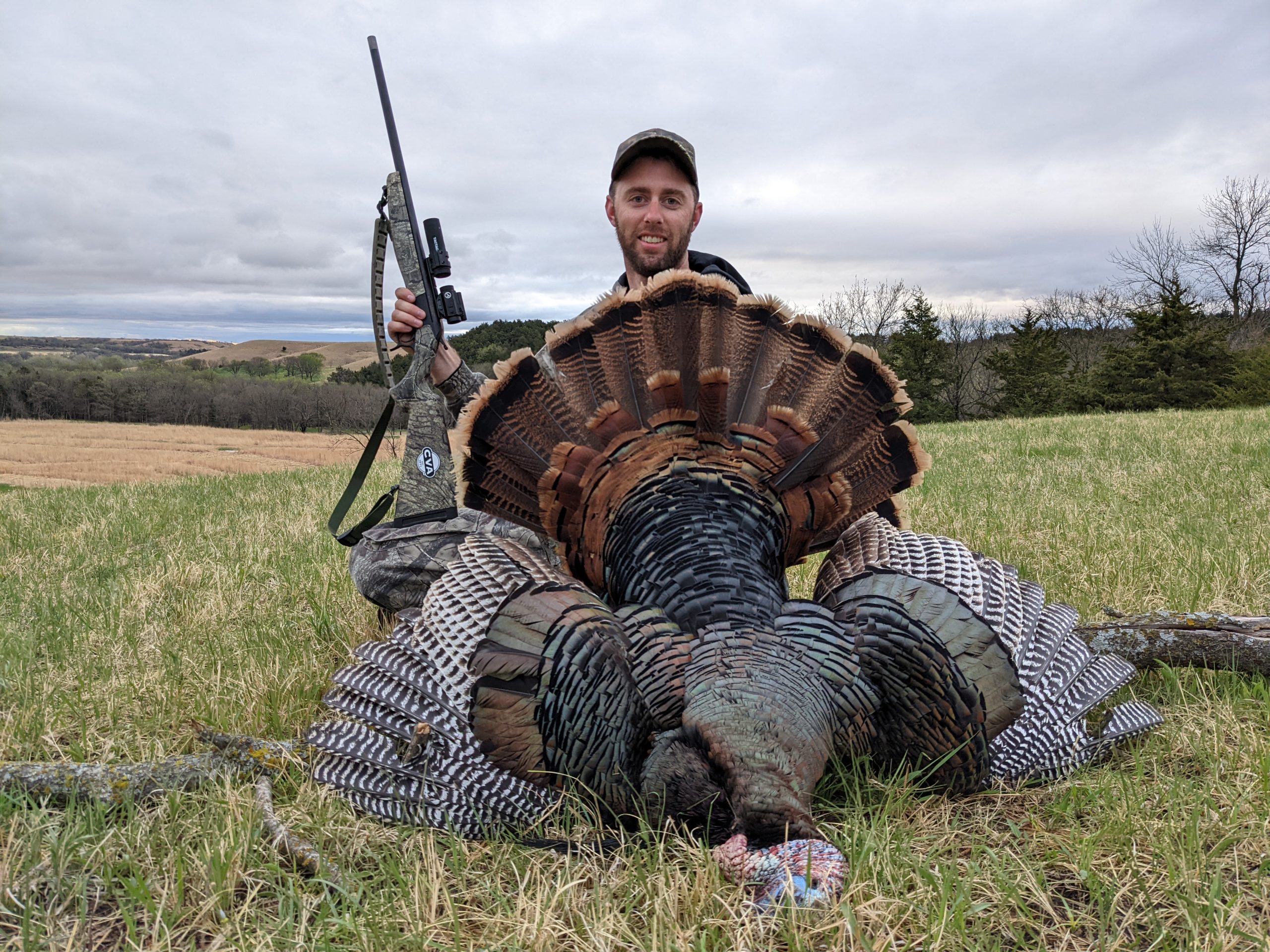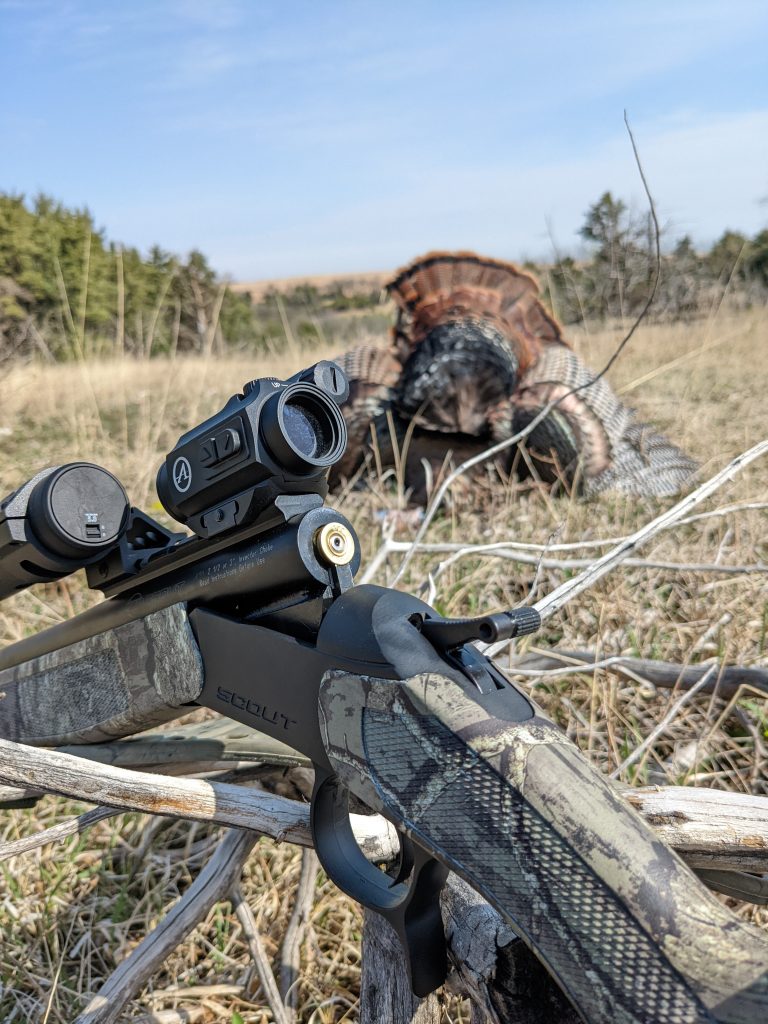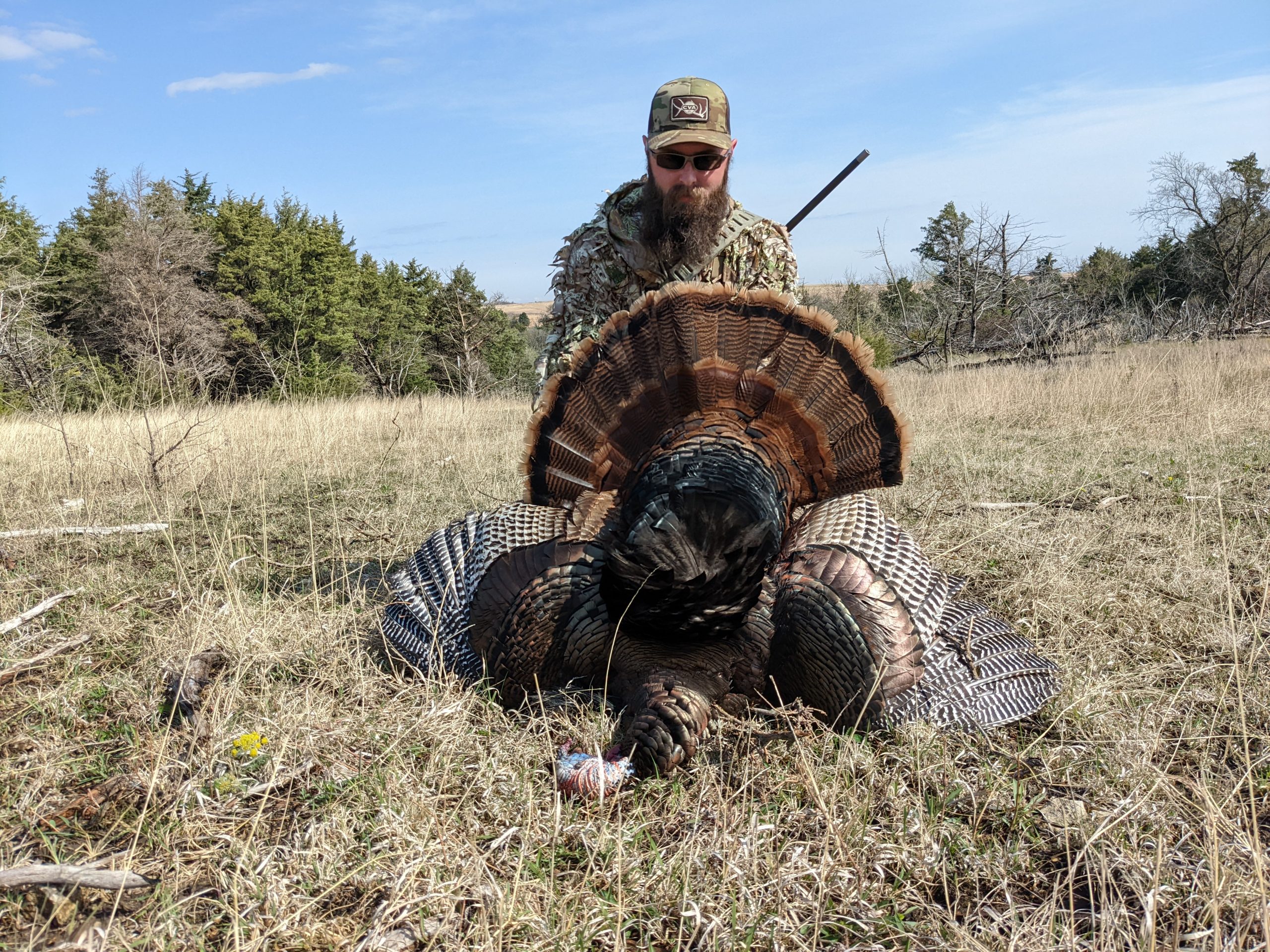Patterning your shotgun + Load, choke & optic selection
This post features insights from Athlon Staff Members Drake Adams & Keagan Williams

Turkey season is right around the corner…
In some states, it’s already started! This post aims to offer insights that will set you up for success in the field. As with all hunting and shooting sports, preparation is key. This article offers a quick overview of four essential elements of preparation – patterning your shotgun + load, choke, and optic selection. Let’s begin with load selection.

Finding the best load for your shotgun…
Can feel like a daunting task, especially for those who are new to the world of shotguns. Let’s begin with the basic information that is printed on almost every box of shotgun shells.
Gauge – This refers to the size of your shotgun’s chambering (which should be stamped on the barrel). Never use shells that are not a match for your chambering. 12 gauge is the most popular for turkey hunting, but many people are starting to use 410 as well.
Length – Every shotgun is designed to accommodate a particular shell length. Some shotguns can accommodate a range of lengths. Either way, it is important to determine and use the length of shells your shotgun was made for. This is information that should be easy to find in the user’s manual or by contacting the manufacturer.
Velocity – This spec is exactly what it sounds like. It refers to the speed at which your load will travel. Common velocities for turkey hunting will be between 1200 and 1300 feet per second (for 12 gauge).
Shot Weight – This number refers to the total weight of the shot contained within our shell. The most common weight for a turkey load generally falls between 1 3/4 oz. and 1 7/8 oz. (for lead).
Shot Size – This number refers to the size of each shot (pellet or BB). The most common sizes for turkey shot is between 4-6 (for lead).
As with every type of firearm, your shotgun will perform differently with various types of ammunition. We suggest trying a variety to find the best combination. A fun (and cost-effective) way to do this is to go out with a few friends or family members. Have each person purchase two or three boxes (all different) and have every person test a few of each. This might seem like a lot of work, but it will be worth it in the long run.

Choke Selection
It is not uncommon to talk to hunters who have been using shotguns for years but have never experimented with chokes before. Simply put, chokes are devices that thread into the end of a shotgun barrel and modify our load pattern. Most turkey chokes are going to tighten our patterns, which enables us to shoot tighter (or smaller) patterns and extend our effective kill range. Turkey chokes can range in price from $20 to $200 dollars. Athlon staff favorites include those made by Indian Creek, Pattern Master, and Carlson’s (pictured above). If you have never used a turkey choke before, we highly recommend giving one a try this season.

Adding an optic to your shotgun…
Can make a remarkable difference. If your shotgun is not optic-ready, chances are it can be drilled and tapped by your local gunsmith for a nominal fee. Add a Picatinny rail and you are ready to go! Optic options are abundant with the most popular being an LPVO (Low Power Variable Optic), an open-sight red dot, or a closed-sight red dot. One of our favorite options is the Athlon TSR2 (pictured above).
Patterning Our Shotgun
Once we have established our load, choke, and optic selections, it’s time to get our shotgun out on the range and dial everything in. Our goals for patterning are two-fold. First, we want to compare our point of aim vs. our point of impact. If we are running an optic, we want to zero it. In other words, we want to make adjustments to windage and elevation until our point of aim and point of impact line up. If we are not running an optic, we want to take note of any deviations and adjust our aim accordingly. The second piece of information that patterning gives us is regarding what kind of shot patterns our setup is going to give us at different distances. Athlon staff members Drake Adams and Keagan Williams recommend shooting at a patterning board or large piece of paper (or target) and firing shots at 20, 30, 40, and 50-yard distances. As we shoot from these distances, we take note of our shot spread (or pattern). This gives us valuable information about how our setup performs at different distances. We can then carry that information into the field and determine distances we can take an ethical kill shot.

Turkey Hunting
As we mentioned in the introduction to this post, success in hunting and shooting sports is largely dependent on being prepared. The steps and details above may seem like a lot of work, but each makes a big difference. The good news is that the information we gather in our initial process can be used year after year. As we enter into the 2023 turkey season, we wish everyone the very best of luck. Happy hunting!

Matt Broxterman, author of this article, is an avid 3-Gunner who also competes in pistol and PRS matches. In addition to managing the Pro Team for Athlon Optics, he processes requests for match sponsorship and helps with a variety of other responsibilities for the Athlon marketing team.
